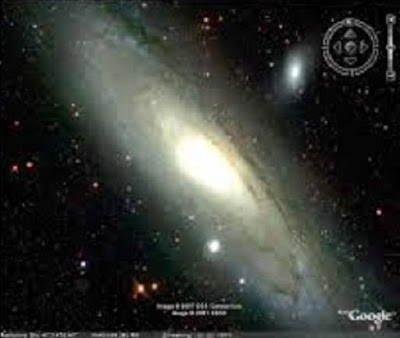Google Earth offers this tool, which combines teaching and purely recreational elements, making it possible to carry out simulations of air navigation with remarkable fidelity.
The user who operates flights with this feature keep in mind the following recommendations, in order to turn their game into something educational and enjoyable:
It is important to make the first flights with the SR-22 model that the system provides.
It is also advisable that the first landings are rehearsed with model SR 22. Low cruising speed and its easy maneuverability make it very suitable to practice correctly the arrival to the track.
It is advisable to drive the aircraft using the arrow keys by simultaneously pressing the Shift key. If you don't activate this key to give direction to the ship, it would begin to tilt left and right and if the user does not have much skill, you can not already level it.
Although it is not essential that you ask the system to show the names of cities or rivers, yes it should be that the user use the compass provided by Google Earth. It is also recommended that note that the latitude and longitude accurate destination addresses which, because it is very easy to lose the notion of trajectory that takes.
Finally, for landing it should bear in mind these guidelines:
In addition to taking the precautions indicating manual, ideal for reaching track speed ranges, the SR-22, between 70 and 160 mph, and, for the Viper, in a spectrum that records successful landings at 130 mph to 200 mph.
As it's a complicated maneuver, the system recognizes how successful landing but the aircraft out of the line of the track or even reaches the outside area of the airport.
The Simulator allows landings on any route or any field, provided they present a surface without oscillations and the manoeuvre is carried out properly.
The SR-22 stabilizes the fuselage itself only, but the Viper needs to be driven by a user which stabilize the fuselage when the plane starts the final descent, because otherwise, the impact on the floor is so strong that the Google Earth recorded the maneuver as an accident and automatically interrupts the session. The best way to stabilize the fuselage is, on the one hand, keep the activated shift key and gently press the up or down arrows: another option is when the track is 600 meters, apply speed to the aircraft so lift your nose and arrange better landing gear, then return to decrease the speed. Taking into account these precautions, the chances of a failed landing are minimal.
Although experienced users landing aircraft no matter from what angle are approaching the track, it is recommended that the beginner correctly note that the latitude and longitude of the airport and that arbitrate all media to accommodate, with the greatest possible anticipation, ship the Meridian - or parallel - appropriate. Thus, in the final arrival, you can concentrate on stability and gradual braking of the Viper without thinking of the final positioning of the aircraft. In the event that it does not have that possibility, must take into account the more advances fast aircraft, easier is fit the track path. Started landing, it must be properly slowed to avoid the dismissal.
And if little, the two aircraft can go even under the water of the oceans as a submarine. There you can see the hills that are under water or if not marine volcanoes etc.






